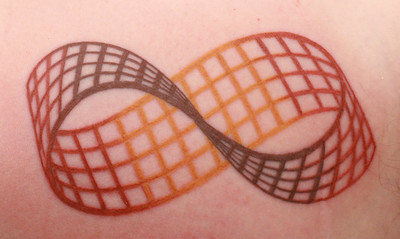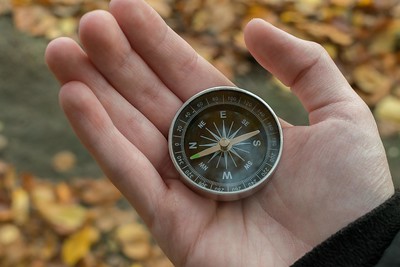Archive for the ‘The Future’ Category
Bringing Your Whole Self To The Party
 If it’s taken from you, you’ll have a problem if you think it was yours.
If it’s taken from you, you’ll have a problem if you think it was yours.
When it’s taken from you, it doesn’t matter if it was never yours.
No one can take anything from you unless you think it is yours.
There can be no loss if it was never yours to have.
You can be manipulated if they know you have a problem letting go.
Said differently, if you can let go you can’t be manipulated.
Whether you want to admit it or not, it all goes away.
But if you see your favorite mug as already broken, there’s no problem when it breaks.
If you recognize your thirties will end, you won’t feel slighted when you start your fourth decade.
And it’s the same when you start your your fifth.
When you know things will end, their ending comes easier.
When you’re aware it will end, you can do it your way.
When you’re aware it’s finite, it’s easier to do what you think is right.
When you’re it all goes away, you can better appreciate what you have.
When you’re aware everything has a half-life, you’re less likely to live your life as a half-person.
Wouldn’t you like to do things your way?
Wouldn’t you like to do what you think is right?
Wouldn’t you like to live as a whole person?
Wouldn’t you like to appreciate what you have?
Would’t you like to bring your whole self to the party?
If so, why not embrace the impermanence?
Image credit — 正面顔〜〜〜(- .. -)
Time Travel Back to the Present
 If you don’t like what happened, now is the time to let it go.
If you don’t like what happened, now is the time to let it go.
If it already happened, it cannot be undone. Time travel is not yet possible. Let it go.
If you spend your energy complaining about the past, you won’t have enough for right now.
If you had no control over the outcome, what does it say if you beat yourself up about the outcome?
It’s not just uranium that has a half-life. Everything does. And so do you.
When you hold tightly to how things are, you get rope burns.
When you no longer have what you had, you can finally appreciate it for what it was.
An unplanned kick in the pants can help you jumpstart a new S-curve when you see it that way.
If you worry about what will happen, don’t. It hasn’t happened and likely won’t.
If you spend your energy worrying about the future, you won’t have enough for right now.
If you try to predict the consequences of bad fortune, you can’t. And it’s the same for good fortune.
Direct linear causality isn’t a thing when it comes to people systems. Propensity, yes. Causality, no.
How it will turn out has nothing to do with how you think it will turn out.
Trying to achieve the ideal future state is a waste of time. There’s no way to know what the Universe thinks is ideal.
The future is uncertain and there’s nothing you can do about it. You might as well not worry about it.
Who is standing in front of you? What if you spent all your energy with them right now? I bet they’d notice.
Who is sitting next to you? What if you treated them like they were the most important thing in your life right now? I bet they’d remember that experience.
What are you doing right now? Wouldn’t it be soothing to put all your energy into that task? Wouldn’t it be helpful to leave the rest for another time? Why not give it a go?
Wouldn’t it be pleasant to put all your energy into doing one thing in a row? Why not try it?
What if you put all your energy into doing the next right thing? Wouldn’t that eliminate some of your stress? Why not test it out?
How would it feel to be here now? Why not give it a try?
Image credit — Bobby Magee
Universal Truths
 When things don’t go as planned, recognize the Universe doesn’t care about your plan.
When things don’t go as planned, recognize the Universe doesn’t care about your plan.
When the going gets tough, the Universe is telling you something. You just don’t know what it’s telling you.
When in doubt, do the next right thing. That’s how the Universe rolls.
If you don’t like how it’s going, change your situation or change your expectations. Those are the two options sanctioned by the Universe.
If something bad happens, don’t take it personally. The Universe doesn’t know your name.
If you catch yourself taking your plan seriously, don’t. The Universe frowns on seriousness.
Don’t spend time creating a grand plan. The Universe isn’t big on grand plans.
If your plan requires the tide to stay away, make a different one. The Universe never forgets to tell the tide to come in.
If you find yourself chasing the Idealized Future State, stop. The Universe has disdain for the ideal.
If something good happens, don’t take it personally. The Universe doesn’t know your name.
When you don’t know the answer, that’s the Universe telling you you may be onto something.
When you have all the right answers, that’s the Universe telling you you’re not asking the right questions.
Image credit — Giuseppe Donatiello
What do you do when you’ve done it before?

COPYRIGHT GEOFF HENSON
If you’ve done it before, let someone else do it.
If you’ve done it before, teach someone else to do it.
If you’ve done it before, do it in a tenth of the time.
Do it differently just because you can.
Do it backward. That will make you smile.
Do it with your eyes closed. That will make a statement.
Do its natural extension. That could be fun.
Do the opposite. Then do its opposite. You’ll learn more.
Do what they should have asked for. Life is short.
Do what scares them. It’s sure to create new design space.
Do what obsoletes your most profitable offering. Wouldn’t you rather be the one to do it?
Do what scares you. That’s sure to be the most interesting of all.
Image credit — Geoff Henson
If you want to make progress, make a map.
 Fascination with the idealized future state isn’t ideal. Before moving forward, define the current state of things.
Fascination with the idealized future state isn’t ideal. Before moving forward, define the current state of things.
Improvement opportunities mean nothing unless they come from a deep understanding of the state of things as they are. Define things as they are before settling on improvement opportunities.
If you want to converge on a common understanding of how things are, make a map.
In times of uncertainty, there’s no way to know the destination. Assess your location, look for low-energy paths, and investigate several in parallel.
If you want to understand the situation as it stands, try to make a map. The gaps in the map define your learning objectives. And once the map hangs together, show it to someone you trust and refine it.
Before there can be agreement on potential solutions, there must be agreement on the situation as it is. Take time to make a map of the situation and show it to those who will decide on potential solutions. Create potential solutions only after everyone agrees on the situation as it stands.
If there’s disagreement on the map of the current state, break the regions of disagreement into finer detail until there is agreement.
It may seem slow and wasteful to make maps and create a common understanding of how things are. But if you want to know slow and wasteful, look at how long things take when that work isn’t done.
If you want to make progress, make a map.
Image credit — maximilianschiffer
When there are teaching moments, what do you teach?
 When you have something special but don’t know it, the Universe is there to take it away from you so you can appreciate what you no longer have. Seems backward, but the Universe knows how to be a good teacher.
When you have something special but don’t know it, the Universe is there to take it away from you so you can appreciate what you no longer have. Seems backward, but the Universe knows how to be a good teacher.
When someone asks you to help them, but you know they are asking for the wrong thing, what do you do? Do you feel pressure to maintain a good working relationship? Do you suggest something different? Or do you simply decline to help? What would the Universe do? It would probably play the long game.
When a team does not follow good practice even though they have the tools, talent, and time, and then asks you to do that very work, what do you do? Do you do the work they should have done? Do you suggest they allocate their resources to the problem? Do you ask them why they didn’t do the right work in the first place? What would the Universe do? Would do a little bit of everything. What would it want that team to learn?
When there’s disagreement on the approach, there can be no agreement on lower-level elements of the work. What do you do? Flip a coin? Arm wrestle? Yell at each other? I think the Universe would want to understand the design space in the most effective way, and I think it would try all the coherent approaches in a small way and see what happens. Then, it would ask everyone to get back together to review the results and decide what to do next.
There are teaching moments every day. But it’s never clear what to teach. Does the urgency and significance of the moment mean that the immediate problem should be solved and the teaching should wait until the next time? Is the teaching that the higher-level systemic problem is so significant that the short-term pain must be experienced to create momentum around solving the systemic problem? Is the teaching that the team should be given help in a way that preserves their emotional well-being so they can finish the project in good spirits and help them elevate their work next time?
With teaching moments there are no right answers. Sometimes you take the opportunity to teach and sometimes you look the other way. Sometimes you hold people accountable and sometimes you soothe egos. Sometimes you withhold resources and sometimes you jump in with both feet.
And like the Universe, you get better at teaching the more you do it.
Image credit — Andrew Kuznetsov
Show Them What’s Possible
 When you want to figure out what’s next, show customers what’s possible. This is much different than asking them what they want. So, don’t do that. Instead, show them a physical prototype or a one-page sales tool that explains the value they would realize.
When you want to figure out what’s next, show customers what’s possible. This is much different than asking them what they want. So, don’t do that. Instead, show them a physical prototype or a one-page sales tool that explains the value they would realize.
When they see what’s possible, the world changes for them. They see their work from a new perspective. They see how the unchangeable can change. They see some impossibilities as likely. They see old constraints as new design space. They see the implications of what’s possible from their unique context. And they’re the only ones that can see it. And that’s one of the main points of showing them what’s possible – for YOU to see the implications of what’s possible from their perspective. And the second point is to hear from them what you should have shown them, how you missed the mark, and what you should show them next time.
When you show customers what’s possible, that’s not where things end. It’s where things start.
When you show customers what’s possible, it’s an invitation for them to tell you what it means to them. And it’s also an invitation for you to listen. But listening can be challenging because your context is different than theirs. And because they tell you what they think from their perspective, they cannot be wrong. They might be the wrong customer, or you might have a wrong understanding of their response, but how they see it cannot be wrong. And this can be difficult for the team to embrace.
What you do after learning from the customer is up to you. But there’s one truism – what you do next will be different because of their feedback. I am not saying you should do what they say or build what they ask for. But I think you’ll be money ahead if your path forward is informed by what you learn from the customers.
Image credit — Alexander Henning Drachmann
The Power of the Present Moment
 You can’t see if you don’t look.
You can’t see if you don’t look.
You can’t look if you’re distracted.
You can’t be distracted if you’re living in the present moment.
You can’t live in the present moment if you’re sad about the past or afraid of the future.
You can’t be sad about the past unless you want it to be different.
You can’t be afraid of the future unless you want to control it.
You can’t want the past to be different if you accept things as they are.
You can’t want to control the future if you accept you have no control over it.
Yet, we want the past to be different and we want to control the future.
When you find yourself wanting the past to be different or wanting to control the future, focus on your breath for a minute or two. That will bring you back to the present moment.
And if that doesn’t work, go outside and walk in nature for fifteen minutes then quiet yourself and focus on your breath for a minute or two. That should bring you back to the present moment.
Everything gets better when you’re sitting in the present moment.
The Difficulty of Goal Setting in Domains of High Uncertainty
 When you work in domains of high uncertainty, creating goals for the next year is exceptionally difficult.
When you work in domains of high uncertainty, creating goals for the next year is exceptionally difficult.
When you try to do something that hasn’t been done before, things may blow up instantly, things may work out after two years of hard work, or things may never work. So, how do you create the goal for that work? Do you give yourself one month to complete the work? And things haven’t worked out at the end of the month, do you stop the work or do you keep going? If it blows up instantly, but you think you know why, do you keep going? Do you extend the due date for the goal? At the start of the work, should the timeline have been set to one year instead of one month? And who decides that? And how do they decide?
When you have to create your goals for something that hasn’t been done before and the objectives of the work are defined by another team, yet that team hasn’t done the prework and cannot provide those objectives, what do you do? Do you create a goal for the other team to define the objectives? And what if you have no control over that team’s priorities and you don’t know when (or if) they’ll provide the needed information? What does a goal look like when you don’t know the objectives of the work nor do you know when (or if) you’ll get that information. Can you even create a goal for the work when you don’t know what that work is? And how do you estimate a completion date or the resource requirements (both the flavor and quantity) when you don’t know the objectives? What does that goal look like?
When you have to create your goals for a team of ten specialized people who each have unique skills, but you don’t know the objectives of the work, when that work can start, or when that work will finish, how do you cascade the team’s goals to each team members? What do their goals look like? Is the first goal to figure out the goal? How many goals does it take to fill up their year when you don’t know what the work is or how long it will take?
When working in domains of high uncertainty, the goals go like this: define the system as it is, define something you want to improve, try to improve it, and then do the next right thing. Unfortunately, that doesn’t fit well with the traditional process of setting yearly goals.
And your two questions should be: How do you decide what to improve? and How do you choose the next right thing?
Image credit — Rab Lawrence
Radical Cost Reduction and Reinvented Supply Chains
 As geopolitical pressures rise, some countries that supply the parts that make up your products may become nonviable. What if there was a way to reinvent the supply chain and move it to more stable regions? And what if there was a way to guard against the use of child labor in the parts that make up your product? And what if there was a way to shorten your supply chain so it could respond faster? And what if there was a way to eliminate environmentally irresponsible materials from your supply chain?
As geopolitical pressures rise, some countries that supply the parts that make up your products may become nonviable. What if there was a way to reinvent the supply chain and move it to more stable regions? And what if there was a way to guard against the use of child labor in the parts that make up your product? And what if there was a way to shorten your supply chain so it could respond faster? And what if there was a way to eliminate environmentally irresponsible materials from your supply chain?
Our supply chains source parts from countries that are less than stable because the cost of the parts made in those countries is low. And child labor can creep into our supply chains because the cost of the parts made with child labor is low. And our supply chains are long because the countries that make parts with the lowest costs are far away. And our supply chains use environmentally irresponsible materials because those materials reduce the cost of the parts.
The thing with the supply chains is that the parts themselves govern the manufacturing processes and materials that can be used, they dictate the factories that can be used and they define the cost. Moving the same old parts to other regions of the world will do little more than increase the price of the parts. If we want to radically reduce cost and reinvent the supply chain, we’ve got to reinvent the parts.
There are methods that can achieve radical cost reduction and reinvent the supply chain, but they are little known. The heart of one such method is a functional model that fully describes all functional elements of the system and how they interact. After the model is complete, there is a straightforward, understandable, agreed-upon definition of how the product functions which the team uses to focus the go-forward design work. And to help them further, the method provides guidelines and suggestions to prioritize the work.
I think radical cost reduction and more robust supply chains are essential to a company’s future. And I am confident in the ability of the methods to deliver solid results. But what I don’t know is: Is the need for radical cost reduction strong enough to cause companies to adopt these methods?
“Zen” by g0upil is licensed under CC BY-SA 2.0.
It’s good to have experience, until the fundamentals change.
 We use our previous experiences as context for decisions we make in the present. When we have a bad experience, the experience-context pair gets stored away in our memory so that we can avoid a similar bad outcome when a similar context arises. And when we have a good experience, or we’re successful, that memory-context pair gets stored away for future reuse. This reuse approach saves time and energy and, most of the time keeps us safe. It’s nature’s way of helping us do more of what works and less of what doesn’t.
We use our previous experiences as context for decisions we make in the present. When we have a bad experience, the experience-context pair gets stored away in our memory so that we can avoid a similar bad outcome when a similar context arises. And when we have a good experience, or we’re successful, that memory-context pair gets stored away for future reuse. This reuse approach saves time and energy and, most of the time keeps us safe. It’s nature’s way of helping us do more of what works and less of what doesn’t.
The system works well when we correctly match the historical context with today’s context and the system’s fundamentals remain unchanged. There are two potential failure modes here. The first is when we mistakenly map the context of today’s situation with a memory-context pair that does not apply. With this, we misapply our experience-based knowledge in a context that demands different knowledge and different decisions. The second (and more dangerous) failure mode is when we correctly identify the match between past and current contexts but the rules that underpin the context have changed. Here, we feel good that we know how things will turn out, and, at the same time, we’re oblivious to the reality that our experience-based knowledge is out of date.
“If a cat sits on a hot stove, that cat won’t sit on a hot stove again. That cat won’t sit on a cold stove either. That cat just don’t like stoves.” Mark Twain
If you tried something ten years ago and it failed, it’s possible that the underpinning technology has changed and it’s time to give it another try.
If you’ve been successful doing the same thing over the last ten years, it’s possible that the underpinning business model has changed and it’s time to give a different one a try.
“Hissing cat” by Consumerist Dot Com is licensed under CC BY 2.0.
 Mike Shipulski
Mike Shipulski